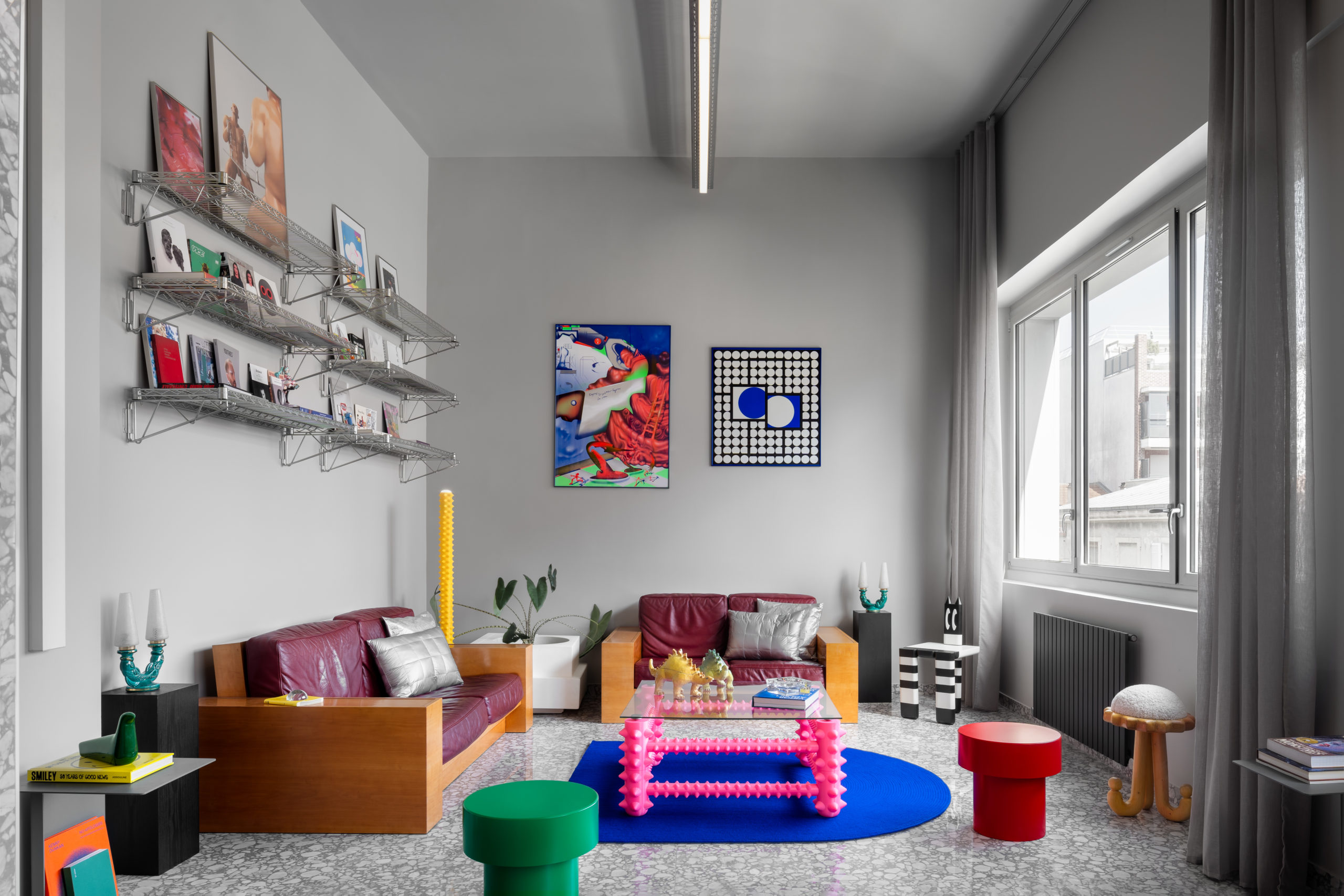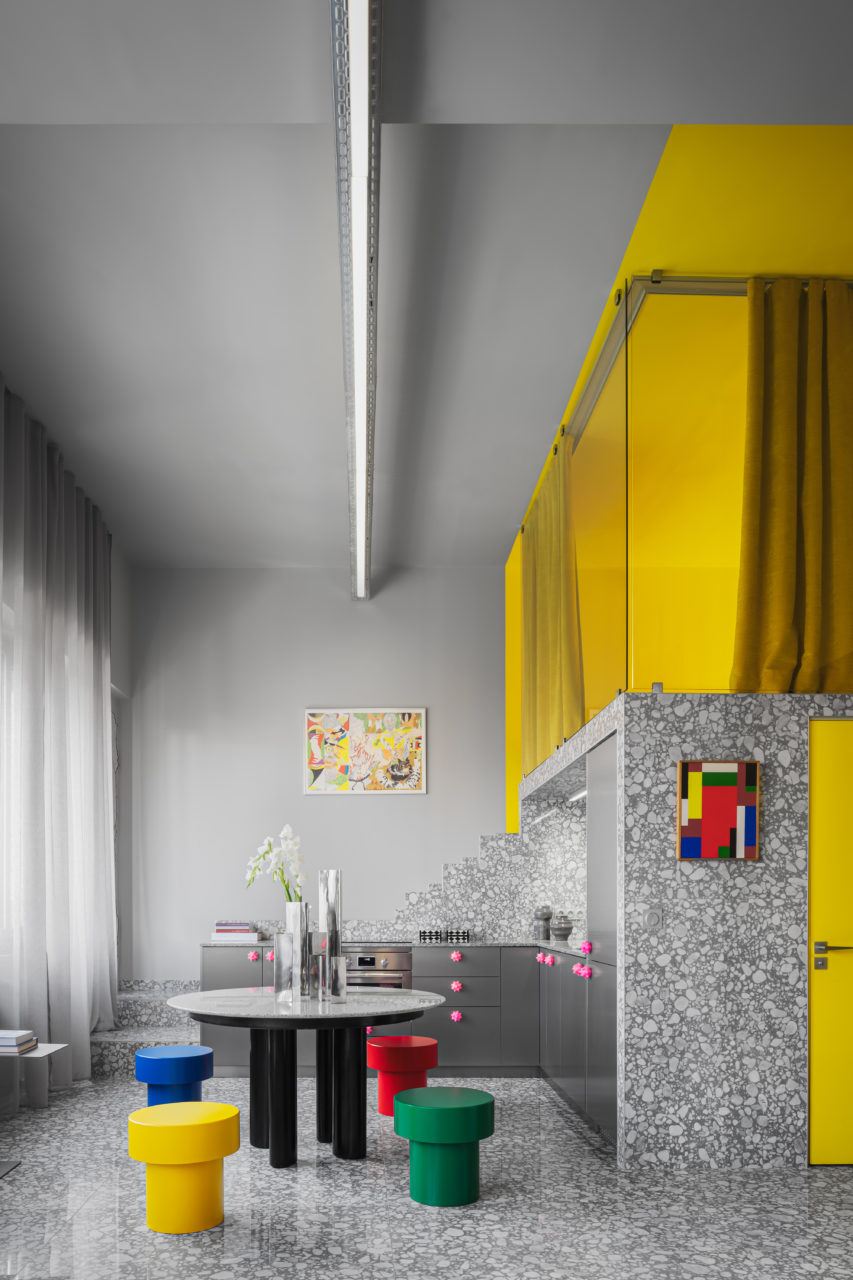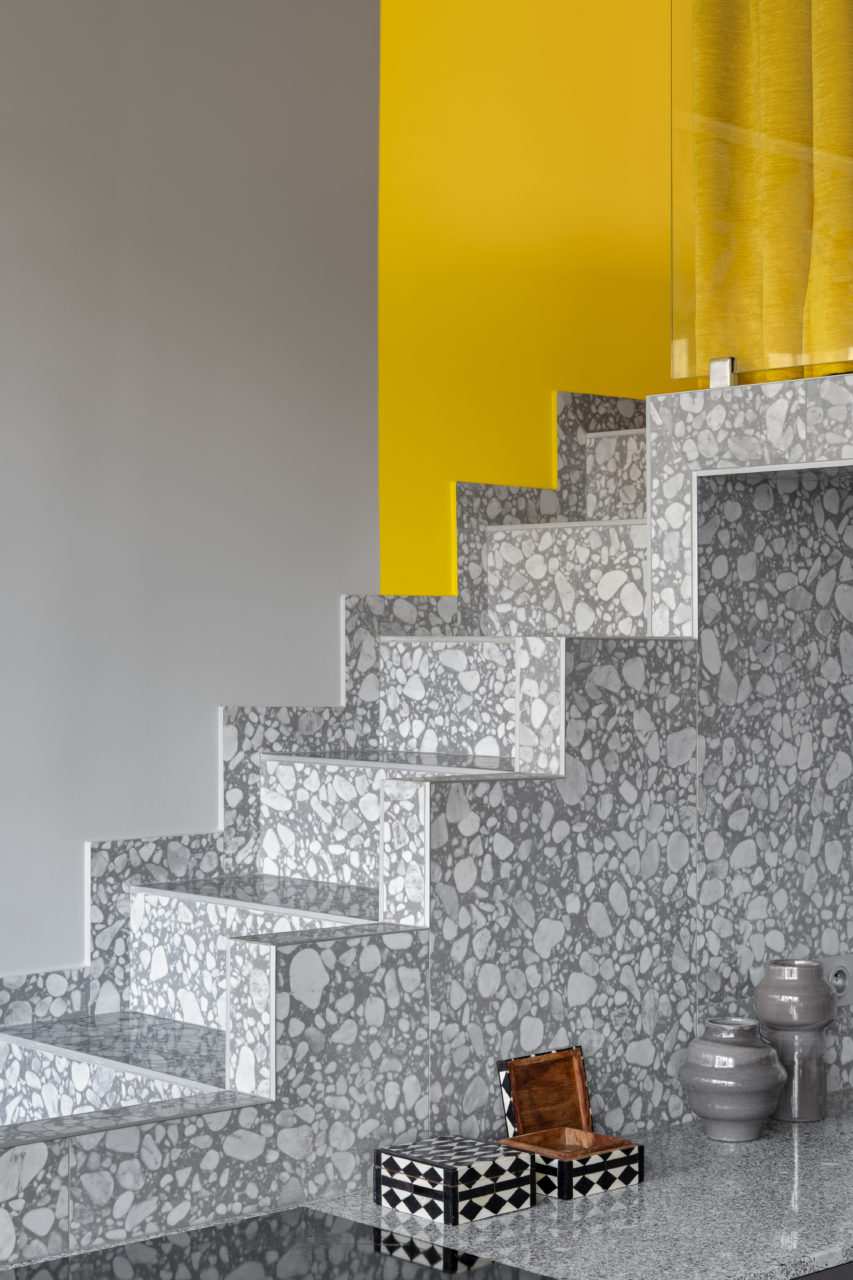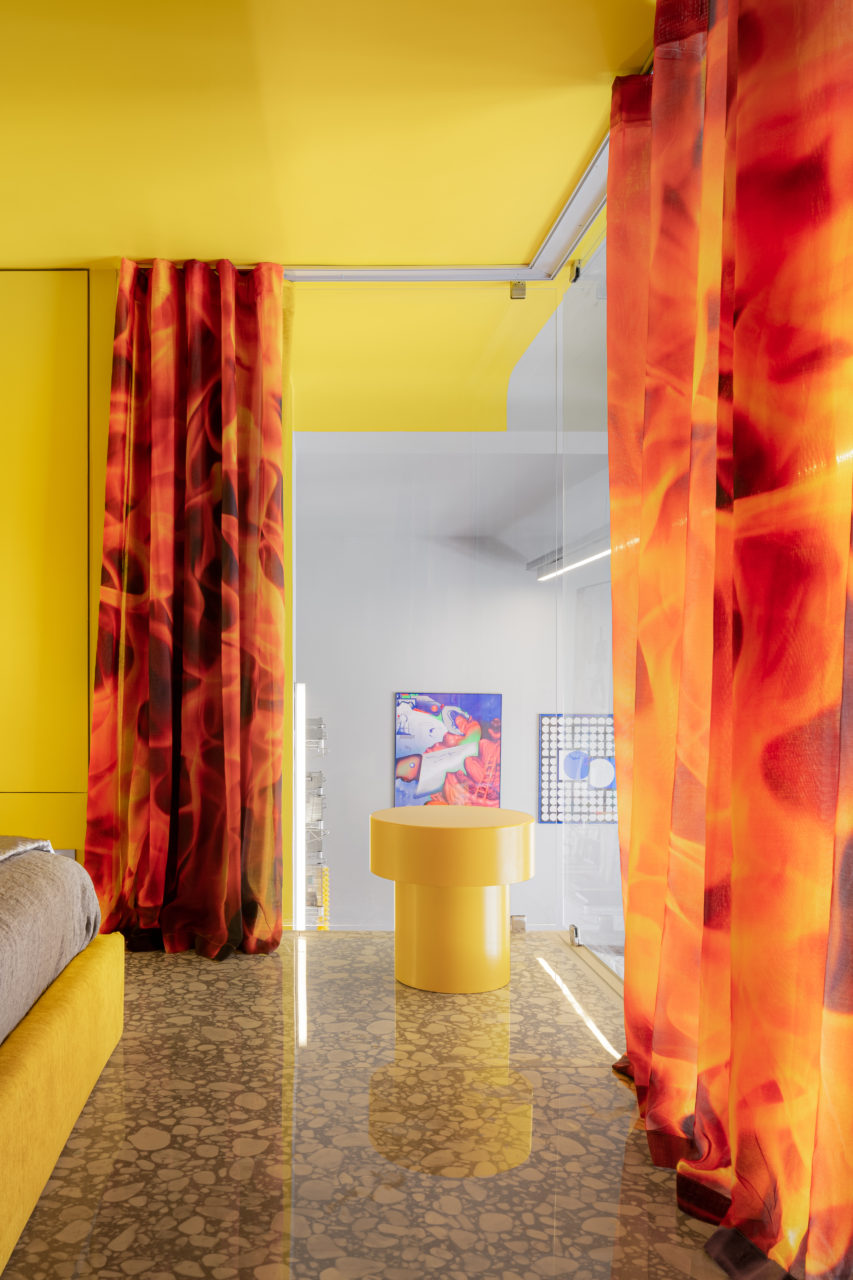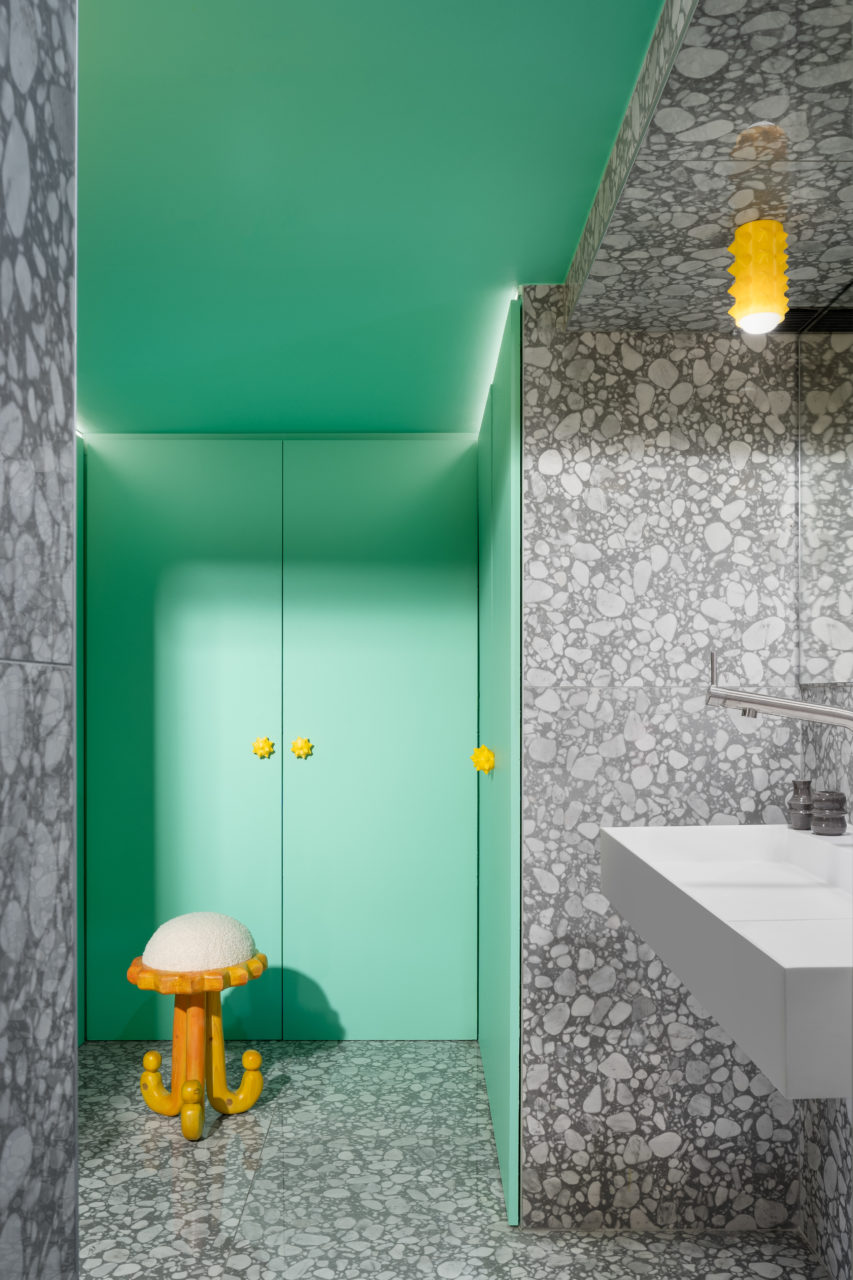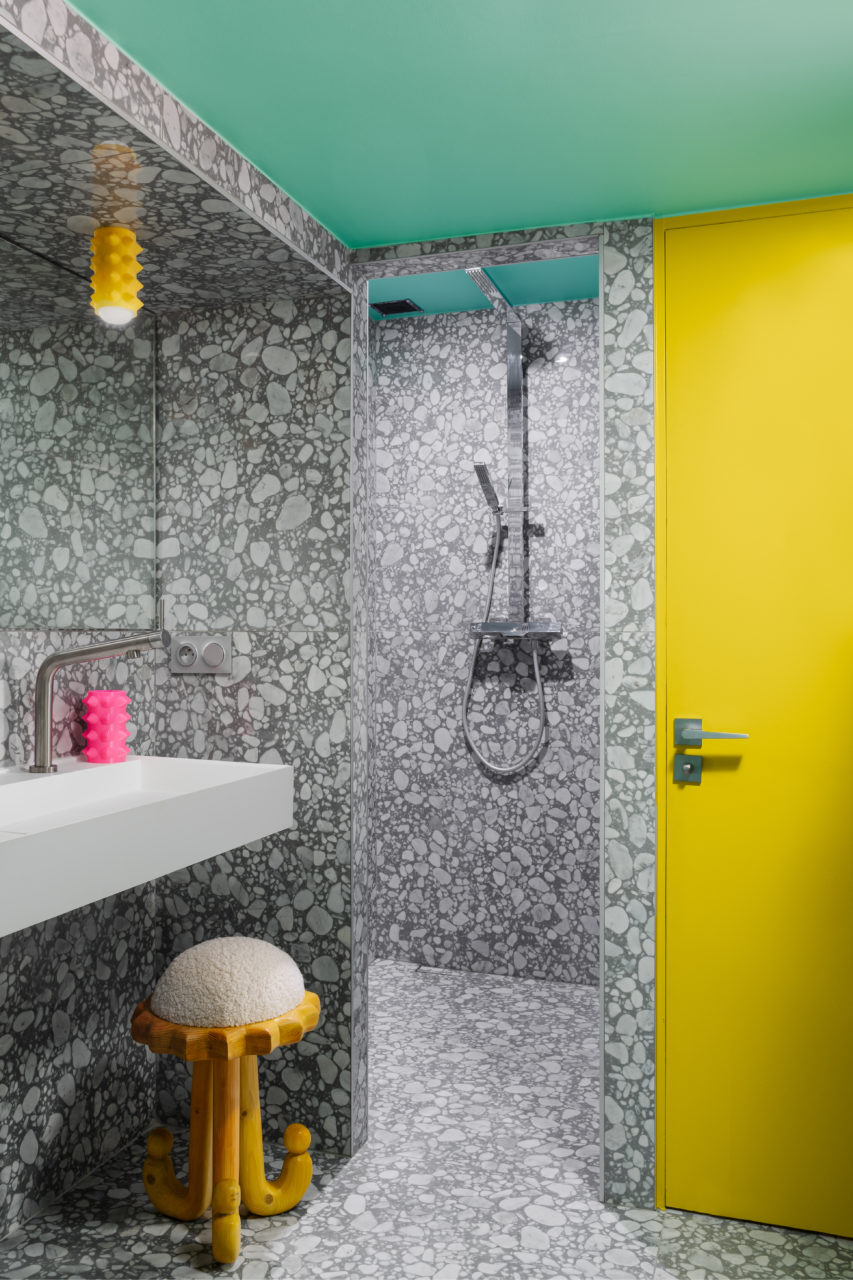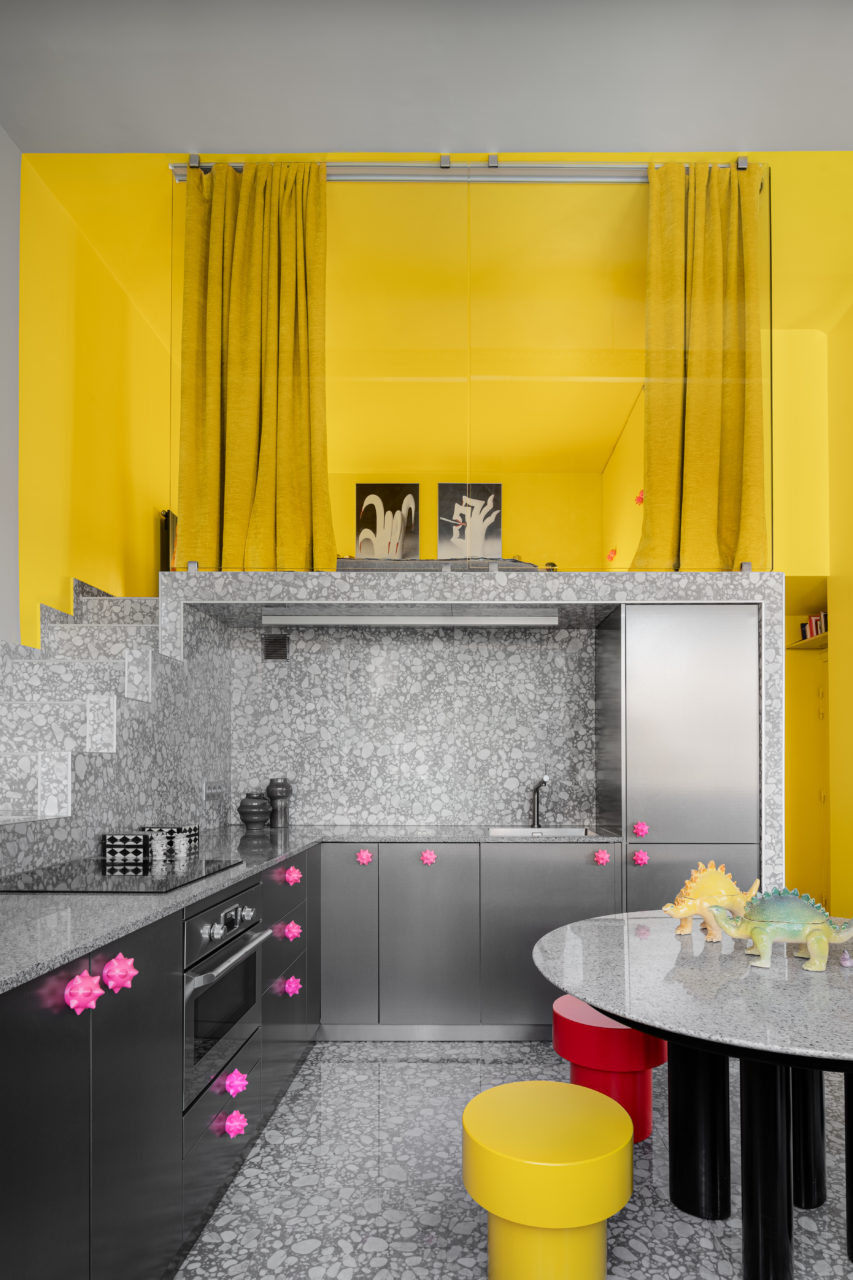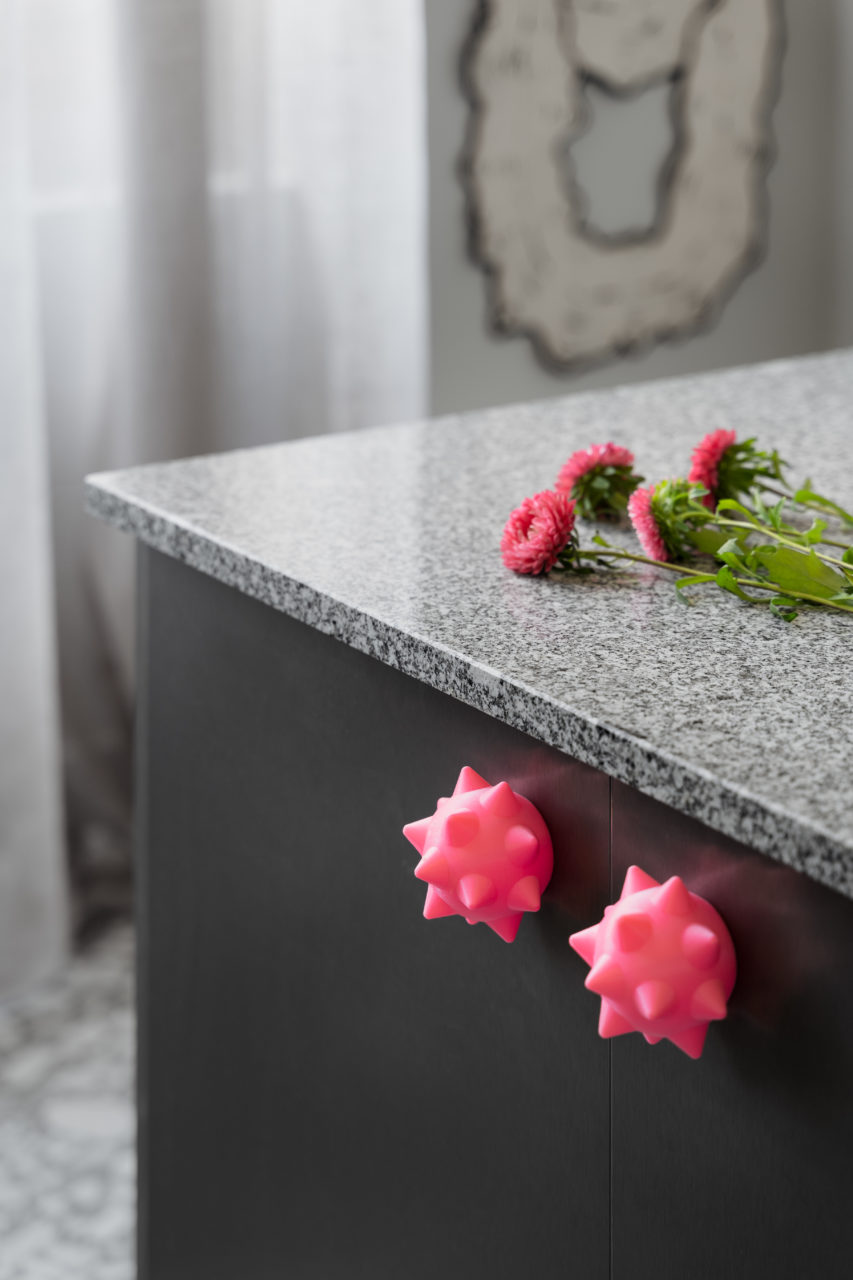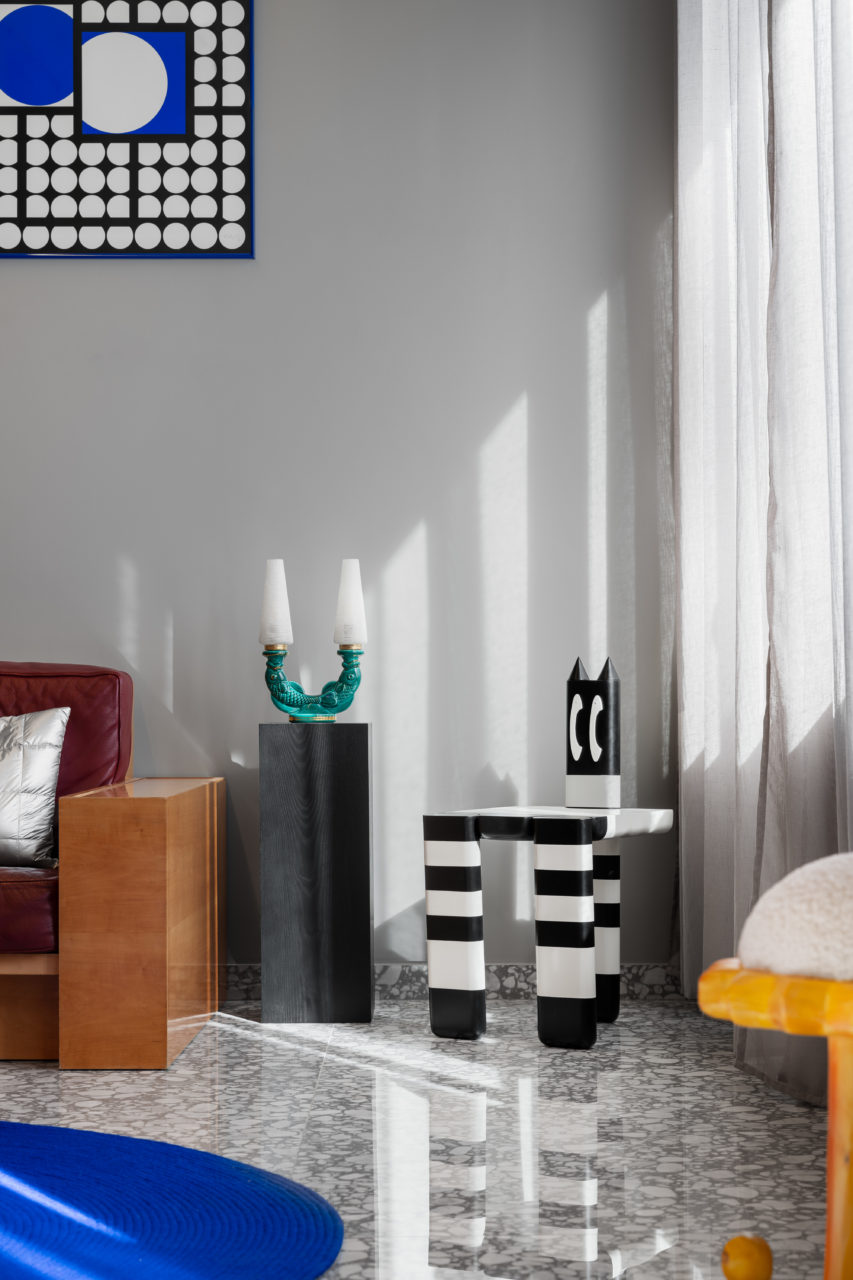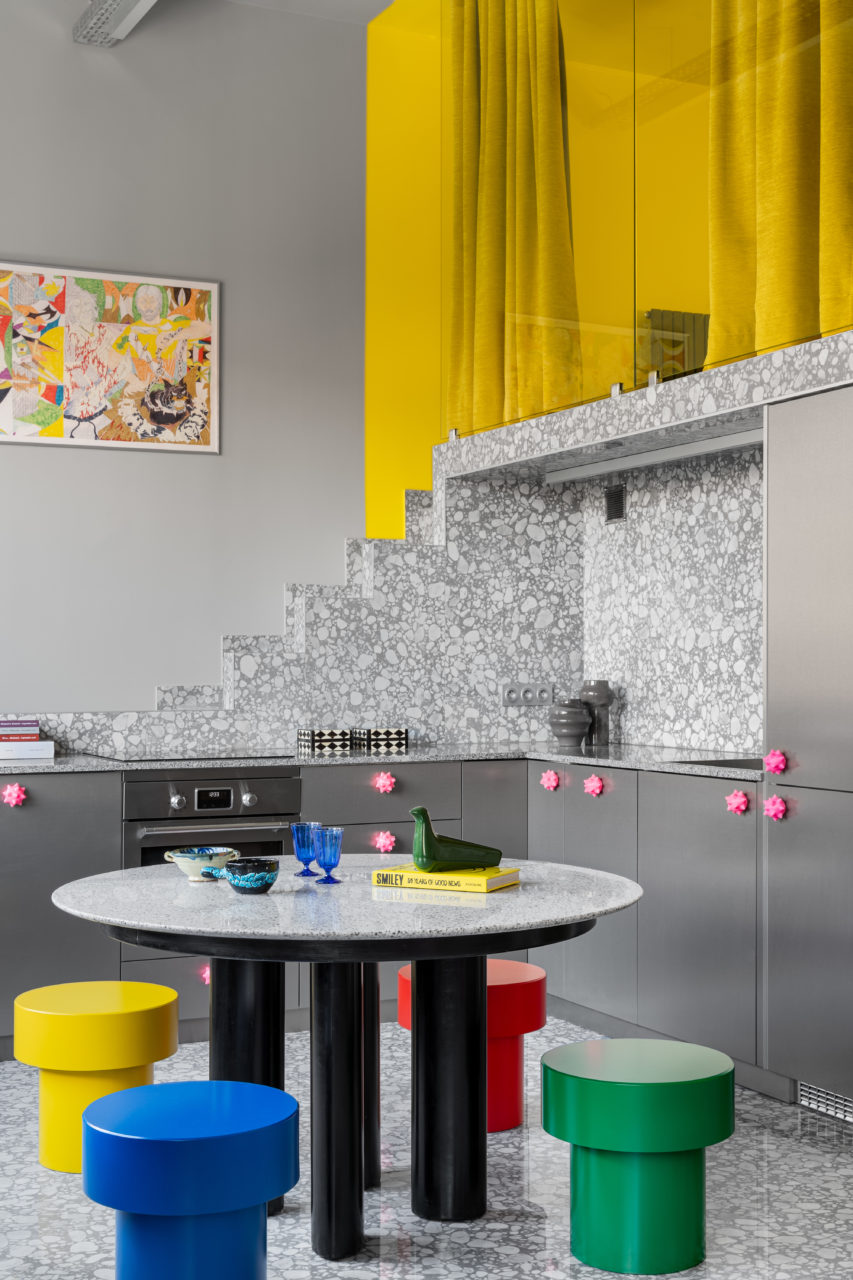“When I design a space,” said Anthony Authié, founder of the adventurous Paris-based firm Zyva Studio, “I always try to create a rhythm.” Don’t bother listening for the rational harmonies of Modernism, or even the swirling swells of the post-Memphis moment that continues to fill up the design world’s grids and scrolls. “If the rhythm is monotonous and linear, you can get bored. It is then necessary to create variations,” he said. Authié’s work is closer to the rhythms of the late, great music producer Sophie: bright and brainy, referential but not reverential to previous ideas of what might be successful.
The latest variation on what he calls “trans-design,” or an architecture not limited to the needs of traditional human bodies, is a home for himself and his life partner. The 600-square-foot space, tucked into a Parisian suburb’s industrial sector, is diminutive but loud. Gray terrazzo covers the floors before climbing the walls and open staircase to reach a new second level. “Its repetitive pattern allows me to create noise,” he said, “and contrast with the muted silence of the gray walls in the rest of the space.”
That noise includes a second floor box which essentially bisects the 14-foot-tall space and houses a bright yellow bedroom. Beneath the bedroom, a third box encloses a minty green bathroom. “The choice of color is not really important,” Authié said. “It’s more about creating colored volumes to identify their functions. I tend to use high-intensity colors as a tribute to the fluorescent color schemes used on construction sites to identify the different ducts, dimensions, and information.” Bedroom privacy comes courtesy of a set of curtains printed with flames that seem to lick the fabric. “There is something kitsch in these flames, inspired by these great rockers on motorcycles that I like,” he said. “And then, a room is also a place of intimacy that can be very hot at times.”
The downstairs kitchen is cooler—downright icy, in fact. “I often think of kitchens as laboratories, as cold, almost clinical spaces where experiments are conducted and where special attention is paid to preservation, to rot, to fungi,” explained Authié. Thus, the metal cabinets and covers nod to the Batman supervillain Mr. Freeze. “Thanks to his icy skin and metal armor, he preserves himself. I found it funny to draw a kitchen that requires the management of the same constraints.” To lighten the mood, Authié 3D printed spiky pink handles that reference the turtle shells in Super Mario Bros. and the punk necklaces he wore as a teenager.
That DIY spirit carries on into the furnishings. For the living room, Authié collaborated with carpenter Maxime Comet to create Le Bandit, a chair hiding in plain sight, all black-and-white stripes and darting eyes. On the nearby table, he herded a pack of his friend Alex Coco’s Dinodish sculptures, which carry on the playful mood established by the charming Pion stool by OHM. Hugue Chevalier sofas offer comfy spots for playing games, contemplating the couple’s extensive art collection—including work from 3D Studio Sucuk und Bratwurst and bulbous illustration specialist Robuche, both based in Berlin, and Op Art grandfather Victor Vasarely—or grazing snacks whipped up in that terrazzo kitchen.
“The rest of the furnishings were thought through in relation to the terrazzo,” Authié said. “The granito on the tabletop repeats the terrazzo pattern, but with a denser and tighter design.” The kitchen worktop is a pattern in counterpoint, picking up the song. “They all act as instrumental shapes, adding to the basic beat to create a complex music with different rhythms and sounds.” Because when making a home for yourself, why not make your own kind of music too?
